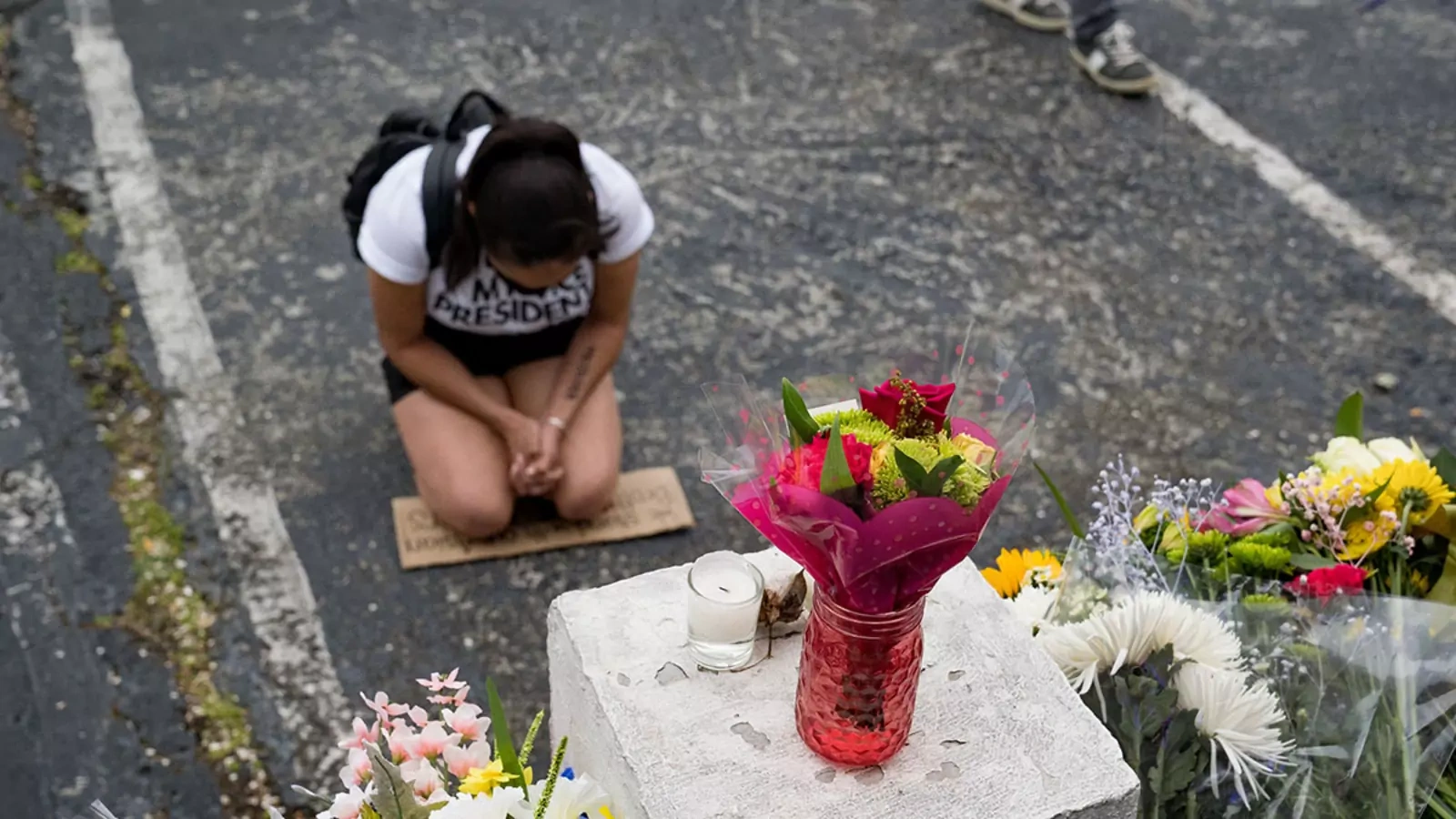The Public Should Be Warned When a Rampage Is Underway

The spree of murders at several Atlanta-area spas demonstrates the unique threat posed by rampaging assailants. A new system that alerts the public during such attacks could help save lives.
March 24, 2021 9:00 am (EST)

- Article
- Current political and economic issues succinctly explained.
Mass shootings and domestic terrorism are often remembered in terms of places and buildings—single symbolic locations where horror unfolded. The historic Emanuel African Methodist Episcopal Church in Charleston, South Carolina; a Walmart in El Paso, Texas; and the Tree of Life Congregation synagogue in Pittsburgh all readily come to mind.
But many assailants embark on paths of destruction across multiple crime scenes. An attack that begins as what seems to be an isolated incident at one site often escalates into a string of violence spanning other locations. Around 30 percent of lone-offender terrorists between 1972 and 2015 plotted to attack multiple locations, according to the FBI; and these attacks often proved to be deadlier than those at single sites.
More on:
This distinct pattern of violence, often referred to as “rampage” or “spree” killings, has plagued communities around the world for decades. The triple shooting at majority-Asian-staffed spas in the Atlanta area on March 16 is just the latest example. Other prominent cases include the terrorist attack perpetrated by Anders Behring Breivik in 2011, in which the Norwegian neo-Nazi killed seventy-seven people at sites dozens of kilometers apart, and the 2019 rampage by Brenton Tarrant in Christchurch, New Zealand, in which he killed fifty-one worshippers at two different mosques.
For terrorists in particular, the rampage is a fitting medium. A string of deadly attacks, whether planned or improvised, can convey an ideological message and effectively hold an entire city captive with fear.
It’s time for counterterrorism and law enforcement agencies to recognize the unique and growing threat that rampage killings pose and start building better defenses against them. A primary component of this effort should be the development of warning systems that alert those who are considered most vulnerable to a follow-on attack once a potential rampage is underway. In some cases, particularly when the rampage is preplanned by the assailant, the site of the initial attack and the identities of those targeted can provide authorities with early clues as to the assailant’s motive, which could inform who should receive a warning.
In the case of the Atlanta-area shootings, once police learned of the attack at the first spa, an automated alert system could have immediately warned similar establishments in the area or, more broadly, all residents and businesses within a certain radius of the first site. Police are still investigating the shooter’s motive, but his choice of targets would have been enough for authorities to issue such a warning. The police reportedly tried to warn spas in the area by phone, but likely only after additional targets were attacked. Approximately forty-five minutes passed between the first incident and the later twin shootings north of the city. An automated alert system could have been far more rapid and therefore more effective.
The good news is that some governments already have the emergency-alert technology that can help mitigate rampage attacks. For instance, Canada and the United States both have national alert systems that could be used to warn of unfolding violence. In fact, Canadian authorities are reviewing their alert policies following a failure last year to use the system to notify Nova Scotia residents about an active shooter who ultimately killed twenty-two people in a twelve-hour rampage. In the United States, the public frequently receives phone-based America’s Missing: Broadcast Emergency Response (AMBER) alerts when a child is abducted, as well as warnings when an extreme weather event is expected. This system could also be used to warn the public of imminent violence, including rampages.
More on:
Of course, in some cases, alerts would not provide people with enough time to take preventive actions. And there would also be cases where the public overlooks or ignores the warnings, or simply lacks the means to act, which is partly why Breivik was able to kill so many more people after his initial attack. But in many other cases, a timely warning could save lives. During the Christchurch shootings, if police had sent an immediate warning to other places of worship in the city after the first site was attacked, the second mosque, which was targeted twelve minutes later, may have been able to take precautionary measures—and seven worshippers may have been saved.
Critics will be right to point out that one attack should not necessarily precipitate a blanket warning that could induce unnecessary, widespread panic. But a localized overreaction is far preferable to the higher death toll that often results when the public goes unwarned about unfolding rampages.
 Online Store
Online Store